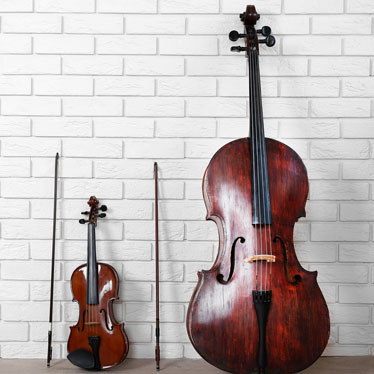Do Violin Strings Make a Difference?

As a beginner violinist, you may be amazed at the wide variety of strings that are available for your instrument. Indeed, there are a plethora of string choices for the violin family alone; and since you naturally want to get the best sound from your playing, many students wonder if different strings will make a difference.
The short answer is yes. The strings you use on your violin not only dictate the character of the sound you’re able to produce, but they also impact how easy or difficult it is to coax those sounds from your instrument. However, different strings have different features that are designed to produce different outcomes. Knowing about strings can help you choose the best set to use with your violin, so that you can play and sound better.
Understanding String Differences
The strings you use have the ability to make subtle (or very distinctive) alterations to the quality of the tone, the playability, volume, and responsiveness of your violin. Often changing one or more of your strings can generate significant improvements.
Moreover, certain strings sound differently on certain instruments. Even the same instruments. For example, your violin is unique (even if it was manufactured) and will respond differently to different types of strings. Ones that sound great for one violin, may not produce the same results on another.
Also, certain strings are used more primarily for specific music genres. In general, country and bluegrass music, jazz and other non-classical players largely employ steel core strings to generate the clear, bright tones expected, while orchestral musicians tend to favor gut or synthetic core strings.
Gut Core
Prior to the early 1900’s, all stringed instruments were played using gut core strings. And although many people think they were fabricated from cat gut, in actuality it is sheep gut that is used to make these natural strings. The addition of silver wrapping around the sheep gut made its appearance in the 1700’s to reduce their mass, and modern gut strings are almost always wrapped with either silver or aluminum.
Many symphony professionals prefer gut core strings for the rich, warm overtones and complex sounds produced. Less responsive than other types of strings, gut strings are more pliable when pressed. However, gut is more expensive and the natural characteristics that give them their unique sound requires constant tuning. For these reasons, gut isn’t often recommended for beginner or even intermediate students.
Steel Core
Steel core strings were developed to overcome some of the drawbacks of gut strings. For instance, the properties of the E string make it very susceptible to breakage, but a steel core helps reduce that tendency. In addition, steel core strings hold pitch longer, even when they are first installed because they stretch less than gut strings.
Like all products, steel strings are constantly being innovated to increase their range and applications. Changes in the way they are constructed and the metals used to wrap the core (such as tungsten, aluminum and titanium) have produced strings with greater depth and intricacy, so there are many choices available.
Synthetic Core
Over the last few decades new developments in string production have contributed to the rise in popularity of synthetic core violin strings. Necessity really is the mother of invention, and synthetic core strings combine all the best of steel and gut. They hold pitch longer, are less susceptible to changes in temperature and humidity, “play in” quickly, and deliver rich, complex tones that are very similar to gut core strings. The Perlon core (a type synthetic nylon) used creates a responsive string that sounds wonderful.
Indeed, the newly released Thomastik-Infeld Alphayue strings are quickly becoming the string of choice for beginners. At $20, the price is comparable to all-steel strings, but the tone, responsiveness, and durability make them superior to steel for both students and their violins.
Gauge Distinctions
The thickness of the string also contributes to the sound and playability of your violin. Basically:
- Thicker strings require a greater level of tension to bring them to pitch, but this also delivers fuller sound and volume, but with less responsiveness.
- Thinner strings need less tension, but also provide less volume with heightened clarity.
Most violinists choose a medium gauge, but remember, the sound produced on your specific violin is unique. While thicker strings may provide more “weight” to the sound on some violins, on others it will drown it. Likewise, thinner strings may sound tinny on certain violins or improve the clarity of others.
Your strings really do have a big influence on the sound and playability of your violin. Understanding their differences will help you recognize the impact they can have on your playing, so take your time and explore with different types to find the best set of strings for your violin.

